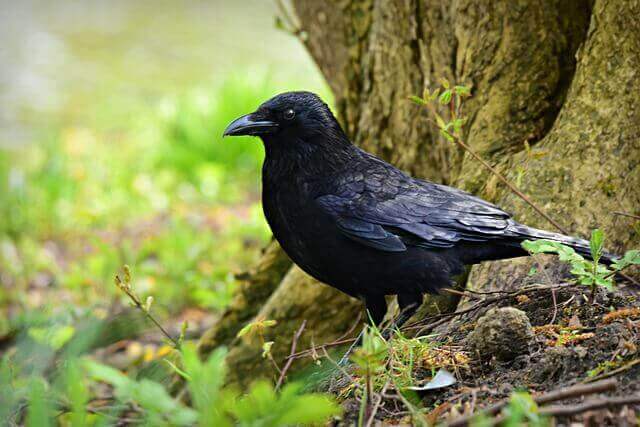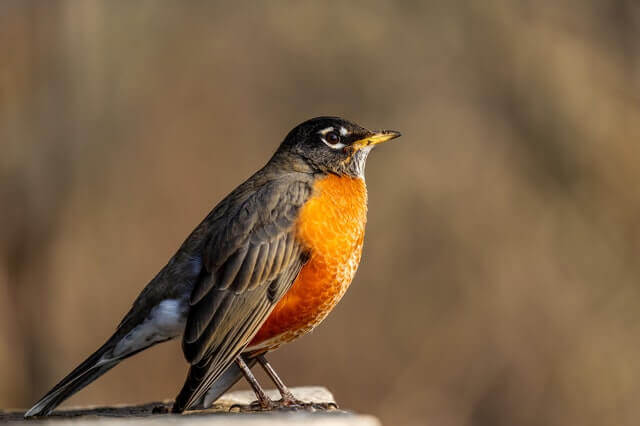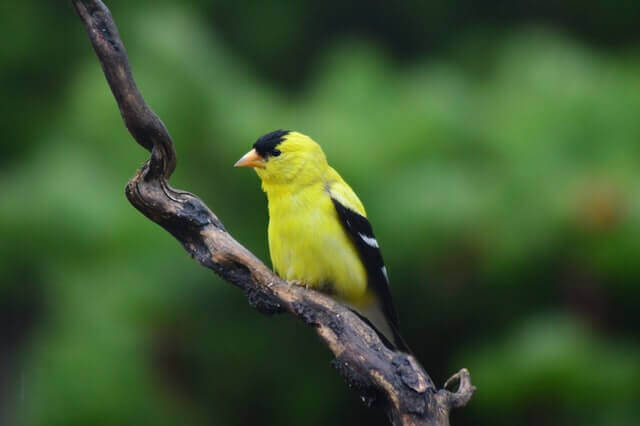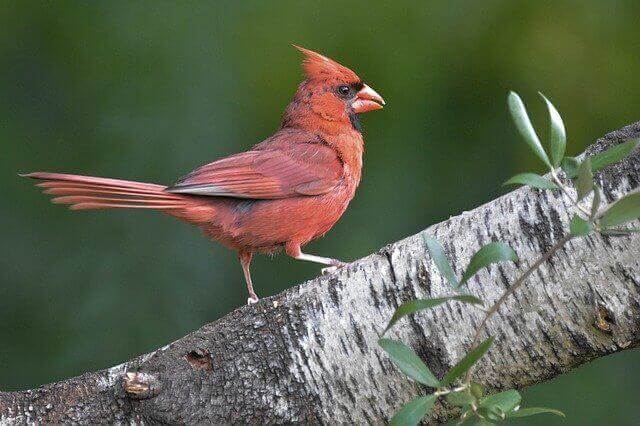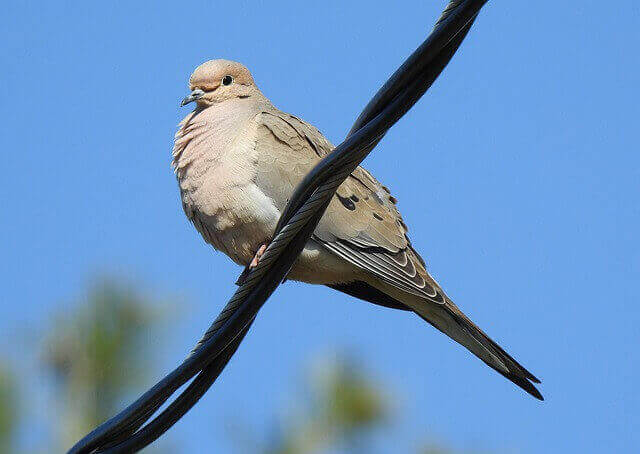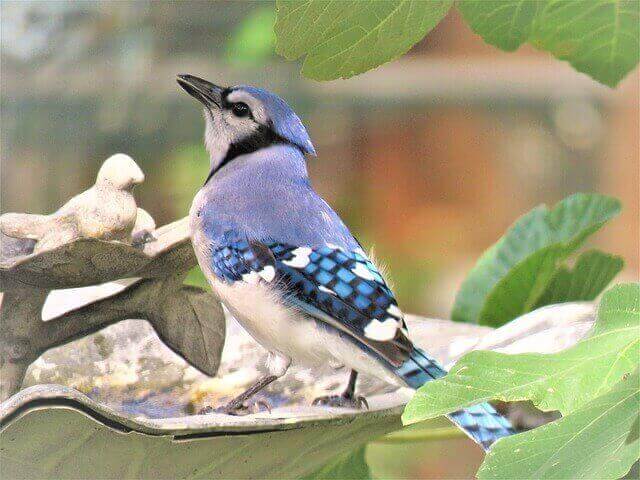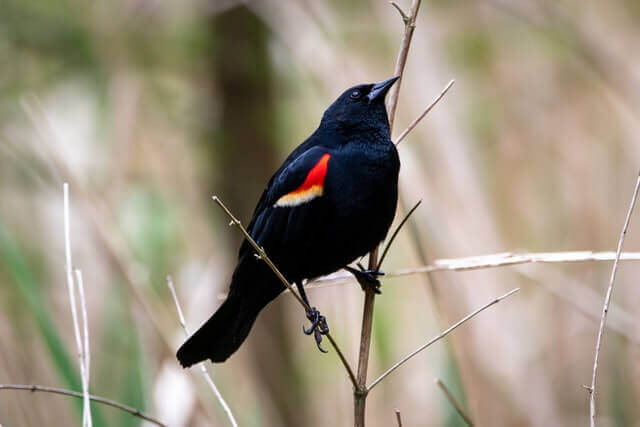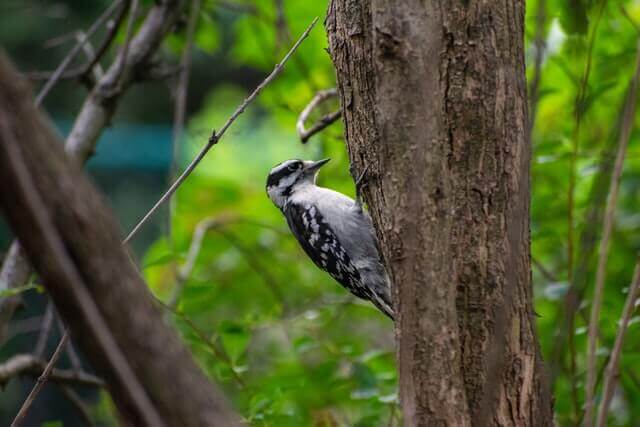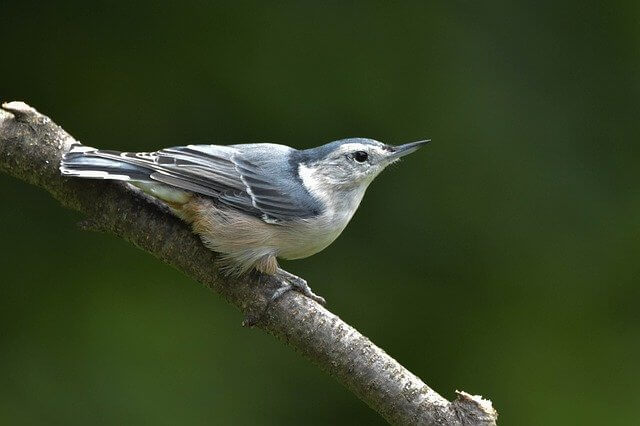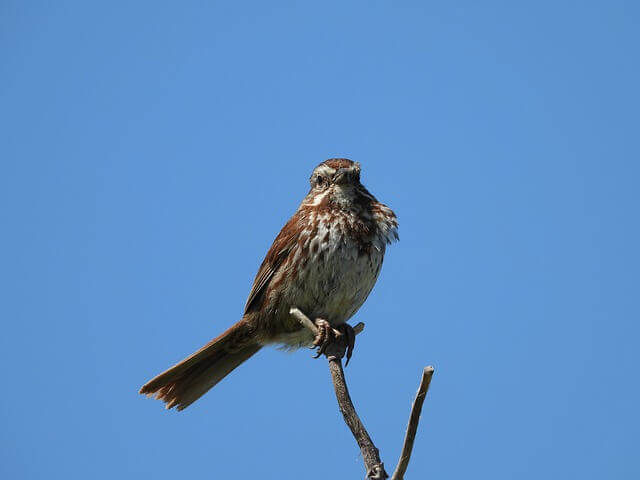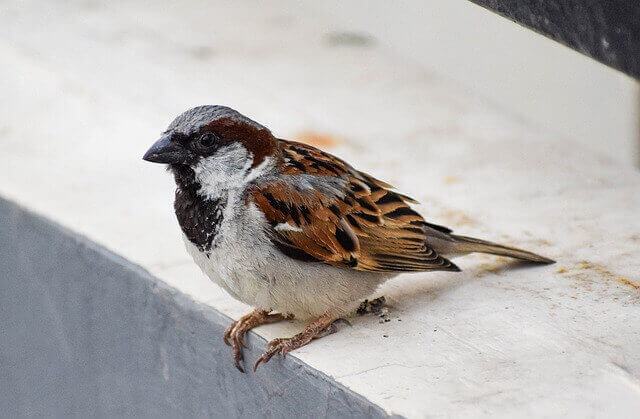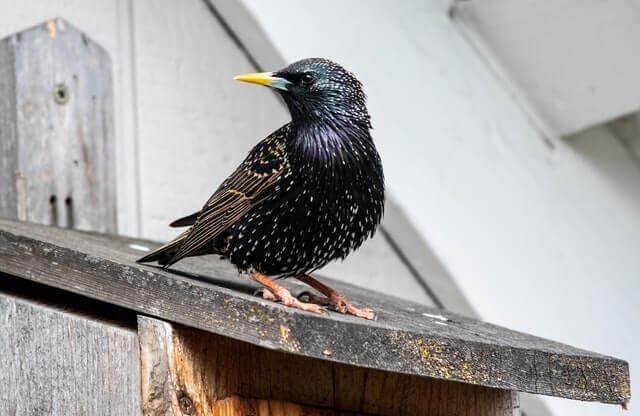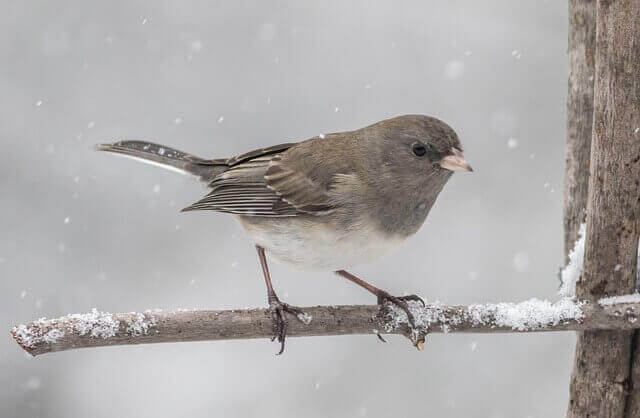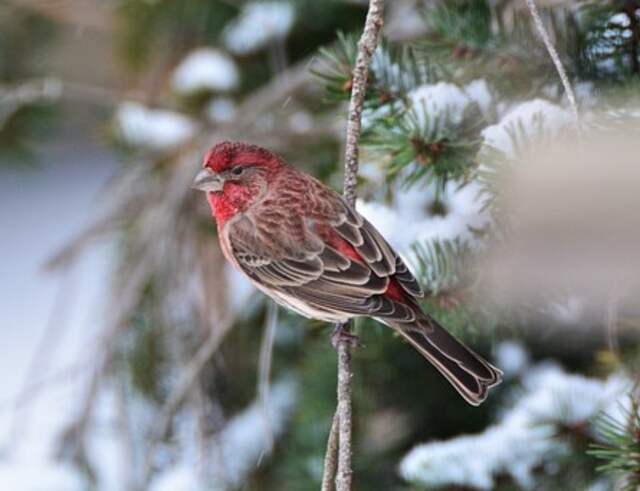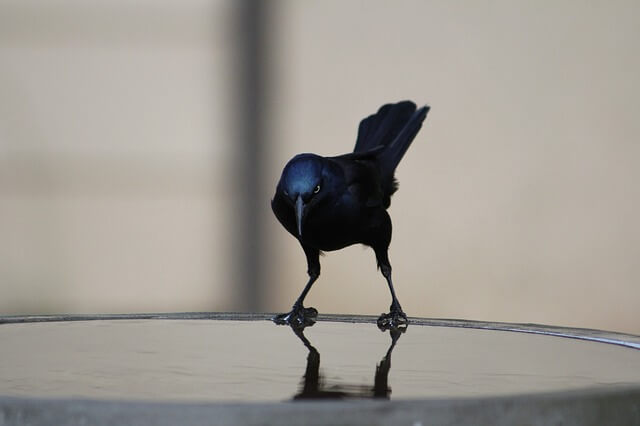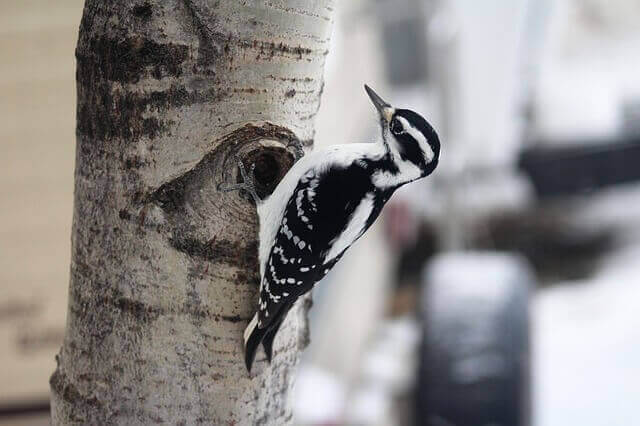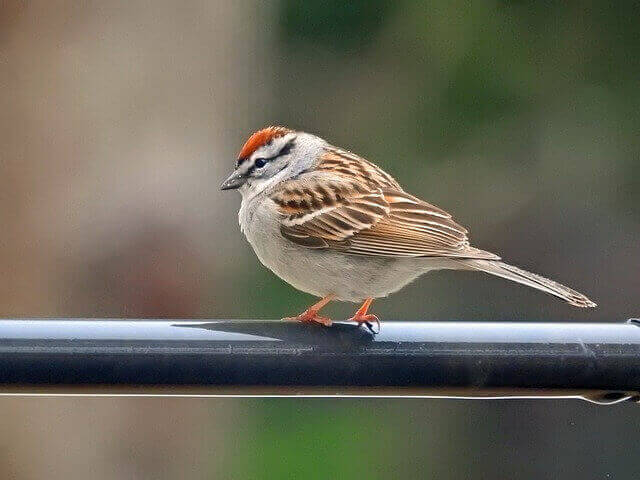Embark on a journey through Wisconsin’s diverse birding habitats! From the tranquil lakes to the dense forests, Wisconsin offers a rich tapestry of avian wonders waiting to be discovered. In this ultimate guide, we’ll unveil the 58 most common birds you’re likely to spot across the Badger State. Whether you’re an avid birder or a nature enthusiast, this comprehensive guide will enhance your birdwatching experiences in Wisconsin.
Table of Contents
- 1 Most Common Backyard Birds In Wisconsin
- 1.1 Black-capped Chickadee
- 1.2 American Crow
- 1.3 American Robin
- 1.4 American Goldfinch
- 1.5 Northern Cardinal
- 1.6 Mourning Dove
- 1.7 Blue Jay
- 1.8 Red-winged Blackbird
- 1.9 Downy Woodpecker
- 1.10 White-breasted Nuthatch
- 1.11 Song Sparrow
- 1.12 Red-bellied Woodpecker
- 1.13 House Sparrow
- 1.14 European Starling
- 1.15 Dark-eyed Junco
- 1.16 House Finch
- 1.17 Common Grackle
- 1.18 Hairy Woodpecker
- 1.19 Gray Catbird
- 1.20 Chipping Sparrow
- 2 Frequently Asked Questions
- 2.1 What is the biggest bird in Wisconsin?
- 2.2 What bird makes noise at night in Wisconsin?
- 2.3 Do finches stay in Wisconsin over the winter?
- 2.4 Do goldfinches stay in Wisconsin year round?
- 2.5 Do we have ravens in Wisconsin?
- 2.6 Are there golden eagles in Wisconsin?
- 2.7 Do blue jays winter in Wisconsin?
- 3 Author
Most Common Backyard Birds In Wisconsin
Black-capped Chickadee

The Black-capped Chickadee is a small, sprightly songbird found throughout much of North America. Though its exact range depends on the subspecies, in general these birds are found in forests and woodlands from Alaska and Canada south to California and Florida. Black-capped Chickadees are very adaptable birds, and can even be found in urban areas as long as there are trees nearby.
These birds usually eat insects and other small invertebrates, but they will also take advantage of whatever other food is available. In wintertime, when insect populations are low, Black-capped Chickadees will often visit bird feeders in search of seeds and nuts. Black-capped Chickadees typically nest in tree cavities, but they will also use nesting boxes if available.
- Frequency: 49.96% (Statistic: eBird)
- Color: Black-cap, white on face, white/reddish-brown flanks
- Habitat: Deciduous and mixed forests, backyards, parks
- Range: USA and Canada
- Size: 11.5 -16 cm length
- Weight: 8 – 15 grams
- Diet: Insects, seeds, berries
- Family: Paridae
- Genus: Poecile
- Maps: Range Map – Sightings Map
- Sounds: Calls and Songs
Related: How Do I Attract Chickadees To My Yard?
American Crow
The American crow (Corvus brachyrhynchos) is a species of bird in the family Corvidae. It is found in North America, where it ranges from Alaska and Canada to northern Mexico. The American crow is a blackbird with glossy black feathers and a distinctive caw. The American crow feeds on a variety of food items, including insects, small mammals, fruits, and nuts.
It will also scavenge for food, often raiding garbage cans or picking up road kill. The American crow has been known to eat other birds, such as chicks or eggs. The American crow inhabits a variety of habitats, including forests, woodlands, fields, and urban areas.
- Frequency: 45.50%
- Color: Black
- Habitat: Open country, farms, parks, woodlands, towns, cities
- Range: Canada, USA, Mexico
- Size: 16 – 21″ inches
- Weight: 315 -620 grams
- Diet: Invertebrates, carrion, seeds, eggs fish, grains, mice, frogs, and other small animals.
- Family: Corvidae
- Genus: Corvis
- Maps: Range Map – Sightings Map
- Sounds: Calls and Songs
Related: How To Attract Crows To Your Backyard: Expert Tips!
American Robin
The American Robin is a common migrating songbird, of which it is one of the species with the most successful history in captivity. For many years the American Robin was largely confined to the southern states of North America but in the last decade the bird’s range has been expanded eastward and westward, making it an increasingly popular visitor to the backyard bird watching enthusiast.
Because of their omnivorous diet, the male American robins feed on almost all kinds of insects, including flies, mosquitoes, dragonflies, caterpillars, worms, grubs, snails, beetles, and many types of berries, including blueberries, blackberries, raspberries, strawberries, bilberries, hawthorn berries, and black cherry berries.
- Frequency: 44.55%
- Color: Mostly brown on the back with an orange colored breast
- Habitat: Wooded areas, backyards, parks, fields
- Range: USA, Canada, Mexico
- Size: 12 – 16″ inches
- Weight: 72 – 95 grams
- Diet: Fruits, berries and insects (earthworms, beetles, caterpillars)
- Family: Turdidae
- Genus: Turdus
- Maps: Range Map – Sightings Map
- Sounds: Calls and Songs
Related: Interesting American Robin Fun Facts
American Goldfinch
The American Goldfinch is a beautiful little bird that is found throughout North America. They are small, with a wingspan of only 4-5 inches, and have a bright yellow body with black wings. The males also have a black cap on their head. These birds are very social and can often be seen in large flocks feeding on seeds. The American Goldfinch has a wide range, stretching from coast to coast in the continental United States.
They are also located in parts of Canada and Mexico. These birds prefer open areas such as fields and meadows, but can also be found in woodlands and forests. The diet of the American Goldfinch consists mainly of seeds, but they will also eat insects on occasion. In the summer months, they will eat more insects than seeds, as this is their main source of food for raising their young.
- Frequency: 42.04%
- Color: Face, neck, and underside are yellow, black wings with white bars.
- Habitat: Deciduous forests and thickets, roadside, grasslands, backyards, meadows.
- Range: Canada, USA and Mexico
- Size: 4.3 – 5.5″ inches length
- Weight: 12 -18 grams
- Diet: Grass, dandelions, chickweed, sunflowers and ragweed, thistle, red alder, birch, spruce seeds.
- Family: Carduelinae
- Genus: Spinus
- Maps: Range Map – Sightings Map
- Sounds: Calls and Songs
Related: American Goldfinch Interesting Facts
Northern Cardinal
The Northern Cardinal is a North American bird that ranges from southern Canada to northern Mexico. Their diet consists mainly of seeds, fruits, and insects. Their main habitat includes forests, woodlands, and gardens.
The Northern Cardinal is a brightly colored bird that is easily recognized by its red plumage. The male Northern Cardinal is especially vibrant, with a red body and black mask. The female Northern Cardinal is less brightly colored, with a grayish-brown body and reddish wings.
The range of the Northern Cardinal extends from southern Canada to northern Mexico. In the United States, the bird is found in the eastern and central states. The range of the Northern Cardinal has expanded in recent years due to habitat loss in its native range and an increase in backyard feeders.
- Frequency: 40.82%
- Color: Mostly red with a black mask on the face, short pink bill
- Habitat: woodlands, gardens, parks, backyards, and wetlands
- Range: USA, Canada, Mexico
- Size: 8.2 – 9.3″ inches
- Weight: 33 – 65 grams
- Diet: Fruits, berries, and insects (grasshoppers, beetles, snails, cicadas)
- Family: Cardinalidae
- Genus: Cardinalis
- Maps: Range Map – Sightings Map
- Sounds: Calls and Songs
Related:
- 10 Best Bird Feeders for Cardinals (Rated for 2022)
- Best Birdhouse for Cardinals 2022 (Tested And Rated)
- Where are Cardinal Birds Found – Best Places to Look
- Cardinal Bird Facts You Never Knew
Mourning Dove
The Mourning Dove is a common bird found throughout much of America. It is a medium-sized dove with a slim body and long tail. The head is small, and the bill is short and blunt. The plumage is pale gray with dark streaks on the back and wings. The underparts are pale with dark spots. The tail is long and pointed. The legs are pinkish.
Mourning Doves can be found in diverse locations, from Southern Canada to Northern Mexico. It breeds in open habitats such as farmland, prairies, and desert edges. In particular, the diet is rich in seeds, fruits, and insects. The Mourning Dove nests in trees or shrubs, often near human habitation.
- Frequency: 38.25%
- Color: Light gray-brown and lighter and pinkish below. The wings have black spots.
- Habitat: Open habitats, urban areas, farms, prairie, grassland, wooded area.
- Range: USA, Canada, Mexico, Central America, Greater Antilles.
- Size: 12″ inches length
- Weight: 112 – 170 grams
- Diet: Rapeseed, corn, millet, safflower, sunflower seeds, pokeberry, sesame, and wheat.
- Family: Columbidae
- Genus: Zenaida
- Maps: Range Map – Sightings Map
- Sounds: Calls and Songs
Related:
- Facts About Mourning Doves – 10 Things You Need To Know!
- Best Bird Feeder For Doves (Reviewed & Tested for 2022)
Blue Jay
The Blue Jay is a common passerine bird species in the insect family Corvidae, originally native to the eastern U.S. It now lives in all the western and central U.S., except for the northern portions of Texas and Montana. It is a frequent visitor to bird feeders, particularly in spring and early summer. Occasional visitor activity can also occur in December through March in Minnesota and Missouri. Resident populations occur in most of the western and central U.S., except for the northern populations of Texas and Montana.
Unlike most passerines, the male blue jay prefers to nest near the water rather than in the trees. A good place to spot a blue jay bird nesting site is along a river bend, a beach, or even on the ground near a telephone line, telephone pole or nearby road. Sometimes the birds will also nest in tree branches near bird feeders or on power lines. The best time to spot these birds is in the morning, as they are visiting bird feeders.
- Frequency: 38.15%
- Color: Blue crest on the head, wings, back, and tail, and has a white face and belly
- Habitat: Deciduous and mixed forests, mixed woodlands, backyards, parks
- Range: Southern Canada, Eastern and Central United States, Florida and Texas
- Size: 8 – 12″ inches
- Weight: 70 – 100 grams
- Diet: Nuts, seeds, caterpillars, grasshoppers, and beetles
- Family: Corvidae
- Genus: Cyanocitta
- Maps: Range Map – Sightings Map
- Sounds: Calls and Songs
Related:
- How to Attract Blue Jays to your Yard?
- Do Blue Jays Migrate? The Truth
- What do Blue Jay Eat – All The Facts
Red-winged Blackbird
The Red-winged Blackbird (Agelaius phoeniceus) is a species of true blackbird in the genus Agelaius. They are sexually dimorphic, with the male being all black with red shoulder patches, while the female is blackish-brown with paler streaks. The Red-winged Blackbird is found in open marshy areas in North America east of the Rockies and winters in Central America and the Caribbean.
It feeds on insects, amphibians, reptiles, and seeds. The habitat consists of freshwater marshes with cattails or other tall vegetation. The Red-winged Blackbird ranges from southern Canada to northern Mexico. In the east, its range extends from Nova Scotia to Florida and south to eastern Texas.
- Frequency: 34.89%
- Color: All black with red patches on shoulder and a yellow wing bar
- Habitat: Deciduous forests, conifers, roadside, rivers, backyards, parks
- Range: North America, Central America
- Size: 6.7 – 7.1″ inches length
- Weight: 41.5 – 65 grams
- Diet: Seeds and insects (butterflies, dragonflies, moths, frogs, worms, spider, snails, carrion, flies.)
- Family: Icteridae
- Genus: Agelaius
- Maps: Range Map – Sightings Map
- Sounds: Calls and Songs
Downy Woodpecker
The Downy Woodpecker is a small woodpecker found in the United States and Canada. The bird has a black body with white stripes on its back and wings. The male has a red spot on the back of its head, while the female doesn’t. The Downy Woodpecker is about 6 inches long and weighs about 1 ounce. The Downy Woodpecker ranges from Alaska and Canada to Mexico.
This bird is found in forests, woodlands, and urban areas. It prefers deciduous trees, but can also be found in coniferous forests. The Downy Woodpecker dines on everything from insects, spiders, berries, and nuts. It uses its long tongue to penetrate into crevices in search of food. The bird will also eat suet from bird feeders. The Downy Woodpecker nests in tree cavities.
- Frequency: 34.69%
- Color: Black with a white throat, belly, and back. White spots on wings
- Habitat: Deciduous forests and thickets, roadside, grasslands, backyards, parks
- Range: Canada, USA, and Mexico
- Size: 5.5 – 7.1″ inches in length
- Weight: 20 – 33 grams
- Diet: Mostly insects and beetles and ants, also gall wasps, caterpillars
- Family: Picadae
- Genus: Dryobates
- Maps: Range Map – Sightings Map
- Sounds: Calls and Songs
Related: How to Attract Downy Woodpeckers to Your Yard? (Easy!)
White-breasted Nuthatch
The White-breasted Nuthatch is a small songbird with a large head and short tail. It has a blue-gray upperbody and a white breast with dark streaks. The belly and flanks are gray, and the wings are a dark gray color with white flecks. The beak is black, while legs and feet are gray. The White-breasted Nuthatch ranges from Alaska and Canada south to Mexico.
It’s often found in woodlands, forests, and parks. It prefers deciduous trees, but will also use coniferous trees. The diet of the White-breasted Nuthatch consists of insects, spiders, seeds, nuts, and berries. It will catch insects in flight or on the ground. It will also glean insects from tree bark or leaf litter.
- Frequency: 32.97%
- Color: Has a white face, flanks, and chest. It has a black cap on its head a bluish-gray upper and a brown belly
- Habitat: Deciduous forests, conifers, roadside, rivers, backyards, parks
- Range: Southern Canada, USA
- Size: 5.9″ inches
- Weight: 20 grams
- Diet: Acorn nuts, hickory nuts, ants, caterpillars, scale insects, pine weevils
- Family: Sittidae
- Genus: Sitta
- Maps: Range Map – Sightings Map
- Sounds: Calls and Songs
Related: How to Attract Nuthatches to your Backyard
Song Sparrow
The Song Sparrow (Melospiza melodia) is a small bird that can be found in a variety of habitats throughout North America. The bird has a brown back and streaked breast, with a white belly. The Song Sparrow is about 5-7 inches in length and typically weighs about 20-40 grams. The bird’s breeding range extends from Alaska and Canada to Mexico and the Caribbean.
The Song Sparrow is a non-migratory bird, although some populations may make short-distance movements in response to food availability or changes in habitat. The diet of the Song Sparrow consists primarily of insects and seeds. In summer months, the bird will eat more insects, while in winter the diet shifts to include more seeds. The Song Sparrow will also consume fruits and berries when they are available.
- Frequency: 29.77%
- Color: Gray head, white cheek, a black bib, rufous neck
- Habitat: Urban centers, farms, backyards, edges, yards, and parks
- Range: Europe, Mediterranean, Asia, Australasia, Africa, and the Americas
- Size: 5.5 – 7.0″ inches
- Weight: 25 – 40 grams
- Diet: Grains, seeds, and insects
- Family: Passeridae
- Genus: Passer
- Maps: Range Map – Sightings Map
- Sounds: Calls and Songs
Related: How to Attract Sparrows to your Backyard
Red-bellied Woodpecker
The Red-bellied Woodpecker is a medium-sized woodpecker found throughout the eastern United States and into southern Canada. These birds are easily identified by their red belly and black-and-white stripes running down their back. The adult male has a red cap, while the female has a white cap with a black band.
Red-bellied Woodpeckers are most often found in deciduous forests, where they use their strong beaks to drill holes in trees in search of insects. These birds are also known to visit backyard bird feeders, where they will eat a variety of seeds and nuts. During the breeding season, Red-bellied Woodpeckers will excavate nesting cavities in dead trees or dead branches of live trees.
- Frequency: 26.59%
- Color: Gray on body and face and underparts. Black and white pattern on wings, back, and tail.
- Habitat: Forests, backyards
- Range: Southern Canada, Eastern United States, Florida
- Size: 9 – 10.6″ inches long
- Weight: 56 -91 grams
- Diet: Insects, tree frogs, eggs of small birds, oozing sap, and small fish.
- Family: Picidae
- Genus: Melanerpes
- Maps: Range Map – Sightings Map
- Sounds: Calls and Songs
Related: How to Attract Red-bellied Woodpeckers to your Yard?
House Sparrow
The House Sparrow is a small, stocky bird with a thick bill. It is found in a variety of habitats, including urban and suburban areas, farmlands, and open woodlands. The House Sparrow’s diet consists mostly of seeds and insects. The House Sparrow is found throughout most of the world, including Europe, Asia, Africa, and Australia. In North America, it is found in the eastern and central United States.
The House Sparrow has a wide range of habitats, including urban and suburban areas, farmlands, and open woodlands. The House Sparrow feeds primarily on seeds and insects. It will also eat fruits and berries during the breeding season. The House Sparrow typically forages on the ground for food.
- Frequency: 23.98%
- Color: Gray head marking, a reddish-brown back, and gray underparts
- Habitat: Urban centers, suburban areas, backyards, edges, yards, and parks
- Range: North America, Central America, South America, Africa, Australia, New Zealand
- Size: 5.5 – 7.1″ inches in length
- Weight: 25 – 39 grams
- Diet: Insects, beetles, caterpillars, aphids,, grasshoppers, crustaceans, earthworms, vertebrates
- Family: Passeridea
- Genus: Passer
- Maps: Range Map – Sightings Map
- Sounds: Calls and Songs
Related: How to Attract Sparrows to your Backyard
European Starling
The European Starling (Sturnus vulgaris) is a member of the passerine family of birds. This bird species is also known as the Common Starling. The European starling is native to Europe, North Africa, and East Asia. It has been introduced to New Zealand, Australia, South Africa, Argentina and the United States. The European Starling is a highly adaptable bird and can live in a wide range of habitats, including urban areas.
The European Starling has a black plumage with iridescent feathers. The adult bird has a length of 15-17 cm and a wingspan of 30-35 cm. Being similar to one another, the male and female versions of the species are similar in appearance. The juvenile bird has brownish plumage with white spots. The European Starling feeds on insects, earthworms, berries and fruits.
- Frequency: 21.18%
- Color: Black with glossy iridescence plumage.
- Habitat: Forests, woodlands, backyards, edges, yards, and parks.
- Range: North America, Europe, Africa, India, Middle East, China.
- Size: 7 – 9″ inches long
- Weight: 60 – 100 grams
- Diet: Insects (ants, beetles, invertebrates), fruits, seeds, berries
- Family: Sturnidae
- Genus: Sturnus
- Maps: Range Map – Sightings Map
- Sounds: Calls and Songs
Related: How To Attract European Starlings To Your Yard Fast?
Dark-eyed Junco
The Dark-eyed Junco (Junco hyemalis) is a small songbird of the sparrow family. It has a dark gray back and wings, white belly, and a pink bill. The junco’s tail is usually darker than its body. The female junco is usually duller than the male. The Dark-eyed Junco is found in North America from Alaska to Newfoundland, and south to California, Arizona, New Mexico, and Texas.
In the east, its range extends from the Great Lakes region to Nova Scotia and New Brunswick. It is a common bird in woods and gardens. The Dark-eyed Junco feeds on insects, seeds, and berries. In winter, it often visits bird feeders. The junco nests in trees or bushes, usually near the ground.
- Frequency: 21.18%
- Color: Gray head, neck, breast, gray/brown backs and wings, white underside
- Habitat: Wooded areas, forest edges, roadsides, gardens, parks.
- Range: USA and Canada
- Size: 5.1 – 6.9″ inches
- Weight: 18 – 30 grams
- Diet: Seeds, insects, and arthropods
- Family: Passeriformes
- Genus: Junco
- Maps: Range Map – Sightings Map
- Sounds: Calls and Songs
Related: Fun Facts About Dark-eyed Juncos
House Finch
The house finch is a small songbird with a round body and short tail. The male has reddish brown plumage, while the female is more drab-colored. These birds are found in open habitats across North America, from Alaska to Mexico. House finches eat mostly seeds and insects. In winter, they often visit bird feeders to supplement their diet.
These birds build nests out of twigs and leaves, which they line with soft materials like feathers. The house finch is a common bird that can be found in many different types of habitat across North America. These birds are relatively easy to identify by their distinctive plumage, and their cheerful singing voices.
- Frequency: 21.14%
- Color: Reddish face and upper breast, brown streaks on back, belly, and tail.
- Habitat: Urban and suburban areas, backyards, edges, yards, and parks
- Range: Canada, USA, Mexico
- Size: 5 – 6″ inches
- Weight: 16 – 27 grams
- Diet: Aphids, grains, seeds, berries, nettle, dandelion, sunflower
- Family: Fringillidae
- Genus: Haemorhous
- Maps: Range Map – Sightings Map
- Sounds: Calls and Songs
Related:
Common Grackle
The Common Grackle is a member of the New World blackbird family and is found in North and Central America. Their range extends from southern Canada to northern Nicaragua. Common Grackles are found in a variety of habitats including forests, fields, and marshes. They are also commonly seen in urban areas. Common Grackles primarily eat insects but will also consume other small invertebrates, seeds, and fruits.
They forage for food on the ground, in shrubs as well as trees. Common Grackles will sometimes raid the nests of other birds to steal eggs or young chicks. Common Grackles are relatively long-lived birds, with a lifespan of up to 15 years in the wild. They are adaptable birds that can thrive in a variety of habitat types.
- Frequency: 20.25%
- Color: Black overall with a blue, and purple iridescence. Its body plumage is a shimmering copper color.
- Habitat: Woodlands, marshes, meadows, parks, backyards, and fields
- Range: East of the Canadian Rockies, Canada and the United States
- Size: 11 – 13″ inches length
- Weight: 75 – 143 grams
- Diet: minnows, eggs, berries, seeds, grain, insects, frogs, mice
- Family: Icteridae
- Genus: Quiscalus
- Maps: Range Map – Sightings Map
- Sounds: Calls and Songs
Hairy Woodpecker
The Hairy Woodpecker is a bird found in North America. It ranges from Alaska and Canada to the Gulf of Mexico and Central America. The Hairy Woodpecker is most common in woods, but can also be found in other habitats including gardens, parks, and farmland. The Hairy Woodpecker feeds on insects, spiders, and other small animals.
It has a long tongue that allows it to probe beneath surfaces to seek out food. The Hairy Woodpecker often excavates holes in trees to get at insects that are hidden inside. The Hairy Woodpecker is an important bird for controlling insect populations. It is also a popular bird for watching and photography.
- Frequency: 19.99%
- Color: Black and white checkered throughout, all white underside, has a mask
- Habitat: Wooded areas, forest edges, roadsides, gardens, parks.
- Range: USA and Canada
- Size: 7.0 – 10″ inches in length
- Weight: 40 – 95 grams
- Diet: Berries, seeds, nuts beetles, ants, caterpillars, and others.
- Family: Tyrannidae
- Genus: Tyrannus
- Maps: Range Map – Sightings Map
- Sounds: Calls and Songs
Gray Catbird
The Gray Catbird (Dumetella carolinensis) is a medium-sized songbird found in North America. The adult catbird has gray upperparts, black wings with white wing bars, and a long black tail with white edges. The underparts are pale gray, and the head is black with a white throat and eye ring. Adult males and females look alike. Juveniles have browner upperparts and duller plumage overall.
The Gray Catbird is found in woodlands and gardens from southern Canada to northern Mexico. It is most frequently found in the eastern United States. The Gray Catbird breeds in deciduous woods, often near water. It builds its nest in trees or shrubs, usually fairly low to the ground. The catbird’s diet consists mainly of insects and berries.
- Frequency: 16.21%
- Color: Mainly Gray with black on tail and head, white accents on the body
- Habitat: Woodlands, marshes, meadows
- Range: East of the Canadian Rockies, Canada, USA, Mexico, Central America, and the Caribbean
- Size: 8 – 9.5″ inches
- Weight: 23 – 57 grams
- Diet: Fruits, berries, earthworms, beetles, bugs, ants caterpillars, grasshoppers, moths.
- Family: Mimidae
- Genus: Dumatella
- Maps: Range Map – Sightings Map
- Sounds: Calls and Songs
Chipping Sparrow
The Chipping Sparrow (Spizella passerina) is a small sparrow that breeds throughout much of North America. It ranges from the Aleutian Islands in Alaska to Nova Scotia in Canada, and from California to North Carolina in the United States. The Chipping Sparrow is a non-migratory bird, although some northern birds may move south during harsh winters.
The Chipping Sparrow is a seed-eater and typically forages on the ground for food. However, it will also eat insects, especially during the breeding season when insect protein is important for feeding young chicks. The Chipping Sparrow prefers open habitats such as fields, meadows, and parks. It will also nest in trees, shrubs, and vines. The Chipping Sparrow is a relatively common bird that can be found throughout its range.
- Frequency: 16.12%
- Color: Rust-colored upperparts, gray head, and underparts with a reddish cap on the head
- Habitat: Coniferous forests, woodland, farmland, parks, and gardens
- Range: Southern USA and Mexico
- Size: 4.7 – 5.9″ inches
- Weight: 11 – 16 grams
- Diet: Mostly seeds, spiders
- Family: Passerellidae
- Genus: Spizella
- Maps: Range Map – Sightings Map
- Sounds: Calls and Songs
The backyard birds below have a frequency of less than 15.25%
- Northern Flicker – 15.25% Frequency
- House Wren 15.21%
- Brown-headed Cowbird 15.09%
- Tree Swallow 14.57%
- Common Yellow-throat 13.42%
- Barn Swallow 13.15%
- Cedar Waxwing 12.76%
- Killdeer 11.60%
- Baltimore Oriole 11.51%
- Eastern Phoebe 10.81%
- Yellow-rumped Warbler 10.79%
- Red-breasted Nuthatch 10.78%
- Red-eyed Vireo 10.53%
- Rose-breasted Grosbeak 10.50%
- Eastern Bluebird 10.03%
- White-throated Sparrow 10.02%
- Yellow Warbler 9.41%
- Rock Pigeon 9.37%
- Indigo Bunting 8.43%
- Eastern Wood-Pewee 8.30%
- Ruby-throated Hummingbird 8.13%
- American Redstart 7.93%
- American Tree Sparrow 6.98%
- Tufted Titmouse 6.89%
- Pileated Woodpecker 6.56%
- Eastern Towhee 6.56%
- Belted Kingfisher 6.56%
- Eastern Kingbird 6.50%
- Blue-gray Gnatcatcher 6.49%
- Great Crested Flycatcher 6.29%
- Swamp Sparrow 6.26%
- Ruby-crowned Kinglet 5.74%
- Pine Siskin 5.66%
- Field Sparrow 5.59%
- Chimney Swift 5.25%
- Nashville Warbler 5.18%
- Warbling Vireo 5.15%
- Yellow-bellied Sapsucker 5.13%
- Brown Thrasher 5.03%
Frequently Asked Questions
What is the biggest bird in Wisconsin?
The whooping crane is the tallest bird in Wisconsin. Standing nearly five feet tall, these magnificent birds are a sight to behold. Unfortunately, they are also an endangered species. There are only about 380 whooping cranes left in the wild. Most of them live in Canada, but a small number make their home in Wisconsin.
What bird makes noise at night in Wisconsin?
In Wisconsin, many birds make noise at night. The American Robin, Swamp Sparrow, Sedge Wren, Marsh Wren, and Yellow Rail are all common nighttime vocalists in the state. The American Robin is perhaps the most well-known of these birds. This bird is active at night, making a variety of sounds including chirps, warbles, and whistles.
Do finches stay in Wisconsin over the winter?
Although some birds migrate south for the winter, finches are year-round residents in Wisconsin. These little birds are well-adapted to the cold weather and can be seen flitting around even when snow is on the ground. Finches typically eat seeds and insects, both of which are plentiful even in the winter months. So if you’re wondering whether you’ll still see these cheerful little birds around your feeders this winter, rest assured, they’ll be there!
Do goldfinches stay in Wisconsin year round?
Goldfinches are actually year-round residents in Wisconsin. They don’t migrate south for the winter like some other birds do. Instead, they stick around and tough out the cold weather. So if you’re wondering where those goldfinches went during the winter, rest assured that they’re probably right near you. These hardy little birds are just another reason to love Wisconsin!
Do we have ravens in Wisconsin?
Yes, we have ravens in Wisconsin! According to eBird, they have a frequency of occurrence of only 4 percent. This means that out of every 100 birds spotted, 4 will be ravens. Ravena are large, black birds that are known for their intelligence and ability to solve complex problems. They are also known for their strong social bonds and loud, raucous calls. In Wisconsin, you can find ravens in wooded areas near rivers or lakes.
Are there golden eagles in Wisconsin?
There are golden eagles in Wisconsin, but they are very rare. According to eBird, the frequency of occurrence of golden eagles in Wisconsin is only 0.1 percent. Golden eagles are large birds of prey, with a wingspan of up to 2.5 meters (8 feet). They are most often found in open habitats such as grasslands, tundra, and deserts. In Wisconsin, they have been found in the northern part of the state, near Lake Superior.
Do blue jays winter in Wisconsin?
Yes, blue jays do winter in Wisconsin according to eBird. The frequency of their occurrence is 30 percent from December to February. Some people might not think that blue jays would be able to survive the cold winters in Wisconsin, but they are actually quite adaptable. Their diet consists of acorns and nuts, which they store in caches around their territory. It provides them the energy to cope with food shortages. Blue jays are also known to flock together in large numbers during the winter months, which helps them to stay warm and protect themselves from predators.
Related Post: 21 Backyard Winter Birds in Wisconsin 2022 (Photos, Info)


